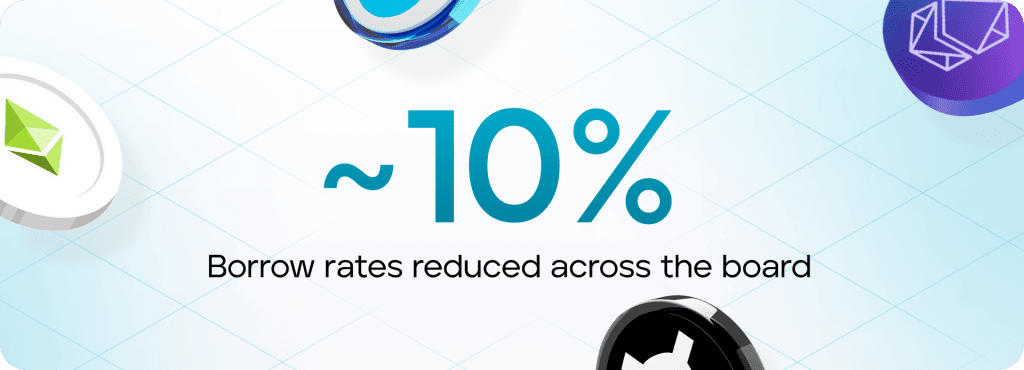Protocol Announcement:
How to Use Ion — Boosting LRT Rewards With Ion Protocol

Introduction
Points. We all have a love-hate relationship with them. And with so many options available to increase your points earnings, it’s hard to choose the best option. Ion Protocol simplifies this decision by providing a platform where users can increase their restaking exposure with minimal liquidation risk, the lowest borrow rates for LRTs, and hyper-efficient deleveraging.
Ion Protocol enables borrowers to earn up to 14x the rewards on their LRT holdings and lenders to earn some of the highest and most sustainable ETH-on-ETH yield in DeFi while qualifying for additional bonus rewards.
Opening a Position On Ion Protocol
To open a position on Ion Protocol, you must gain access via a referral code. Then you can follow these simple steps:
Choose your strategy: Decide whether you want supply LSTs like wstETH or if you want to borrow and multiply your exposure to assets like EtherFi’s weETH, Kelp DAO’s rsETH, Swell’s rswETH, or Renzo’s ezETH (coming very soon).
Assess the market: Review the current borrow rates, available liquidity, and potential earnings.
Create the position: Use Ion Protocol’s interface to multiply your LRT rewards by moving the slider to your desired multiple, selecting the max slippage, and clicking the deposit button!
The full breakdown of how to borrow and lend can be found in the Ion Protocol documentation!
How to Maximize Your Earnings On Ion Protocol
The first wave of LRT points campaigns and airdrops left some users questioning their real earnings. On Ion Protocol, the cost per point has been significantly reduced thanks to lower borrow costs across all our markets. To make it easy, we’ve created a cheat sheet that outlines strategies, costs per EL point, available liquidity, and LRT boosts.
Strategy Breakdown
Bullish
Now, let’s cover the outcome of a bullish strategy: a borrower deposits $10,000 worth of Ion’s supported LRTs and increases their exposure to its rewards by 14x. We’ll assume that the current borrowing rate is 10%.
Here are the key metrics associated with each market and the estimated returns and costs.

Conservative
Let’s cover the outcome of a conservative strategy: a borrower deposits $10,000 worth of Ion’s supported LRTs, increasing their exposure to its rewards by 5x. We’ll still assume that the current borrowing rate is 10%.
Here are the key metrics associated with each market and the estimated returns and costs.

To play with the numbers yourself, check out the full spreadsheet, make a copy, and investigate the different potential scenarios here.
Multiply Your Rewards… Simply
Ion Protocol’s strengths lie in its ability to provide low-risk, low-cost, and highly capital-efficient loans. The protocol leans on innovations in traditional DeFi lending mechanisms to enable this. This includes but is not limited to, supporting exchange rate pricing across all collateral and supply assets, fully isolated markets, and RFQ-based deleveraging and liquidations.
These features enable Ion Protocol to provide the leading platform for multiplied points and incentives farming, ensuring users can maximize their earnings while minimizing risks.

How Ion Works — Mechanism Breakdown
Price-agnostic Lending and Borrowing
Ion Protocol’s markets are completely price agnostic. This means the platform utilizes the ETH exchange rates to underwrite each collateral based on their solvency. Doing so dramatically reduces the chances for a borrower to have their position liquidated because liquidations can only happen in one of two ways:
- A user fails to pay back their debt position (i.e., if someone took on a 10x leverage position in the weETH market at an APR of 10%, they would have 249 days to pay this back before liquidation)
- The validators for a specific protocol (LST or LRT) experience a major slashing event that prevents the protocol from being able to refund ETH for all their LRT or LST tokens
To put this into context, there have only been 432 slashing events in the history of the Beacon Chain/Ethereum Proof of Stake, and none of them have caused a major move in any of the exchange rates for the staking or restaking tokens in existence.
Isolated Markets
To bolster Ion’s economic security, markets on Ion are isolated into pairs instead of being pooled. This enables slashing risk to be attributable to a specific collateral type and not shared amongst all lenders.
For example, if the validators supporting market A experience a major slashing event, it would not affect market B or C.
RFQ-based Deleveraging and Liquidations
In addition to Ion’s markets providing the lowest liquidation risks and best rates, the protocol’s newest improvements ensure high capital efficiency, making the user experience seamless and less costly. These are the request-or-quote (RFQ) based deleveraging and liquidation mechanisms.
RFQs do not require complex on-chain transactions. Instead, they match orders to deleverage a borrow position or liquidations with market makers off-chain to execute on-chain at a lower price.
This system uses Ion’s markets as the source of flow and market makers as a source of liquidity. With the RFQ Ion Protocol:
- Doesn’t require on-chain DEX liquidity to fulfill these requests
- Enable support for assets that don’t have existing, deep on-chain liquidity
- To support larger leveraged positions with minimal worries about price impact when a user wants to close their position or if they get liquidated.
Managed Vaults
Tying it all together are our managed strategy vaults. These enable strategy managers to oversee position management across multiple markets, abstracting away the user’s need to manage their positions and their associated risks. These strategy vaults are also tokenizable, which will be particularly advantageous for users in the future when utilizing these positions throughout DeFi.
More on this to come soon!

Conclusion
Ion Protocol was designed to be the the most capital efficient and secure lending protocol for staked and restaked assets. Don’t miss this opportunity to get ahead on your points accrual and yield farming while you still can. To stay up to date on all the latest updates from Ion, follow us on X and join the discord community.




